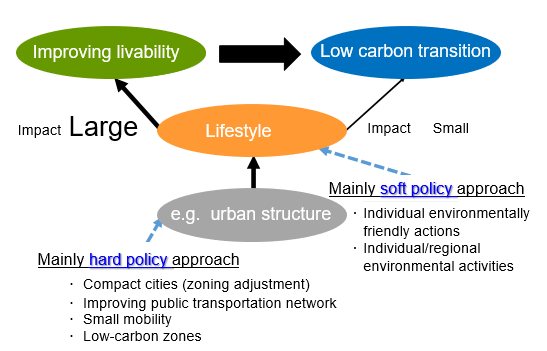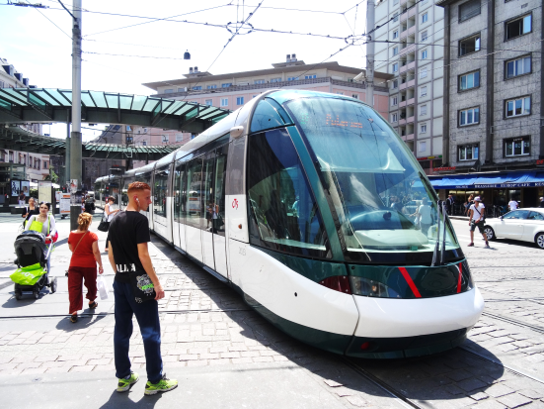Example
Identifying an urban structure model for eco-livable cities
Background and Objectives
A low-carbon, environmentally-friendly lifestyle often has the negative reputation of introducing limitations and burdens into our daily lives. However, reviewing global success cases in urban planning shows that many of these cities are actually low-carbon and livable (eco-livable cities). Even more interestingly, many of these cities have used past serious environmental issues as an opportunity to achieve their ideal urban vision over several decades.
This research (1) identifies an urban structural model for “eco-livable cities” that simultaneously achieve low-carbon and livability, and (2) constructs a planning theory to achieve this through a survey and analysis of Japanese and international regional cities as case studies.
Expected effects
“Eco cities” (mainly in the environmental field) and “livable cities” (mainly in the urban planning field) have been proposed separately as visions of the ideal future city. This research accumulates a scientific basis for “eco-livable cities” that simultaneously and efficiently improve both the “low carbon” environmental dimension and “livability” for residents.


Representative
